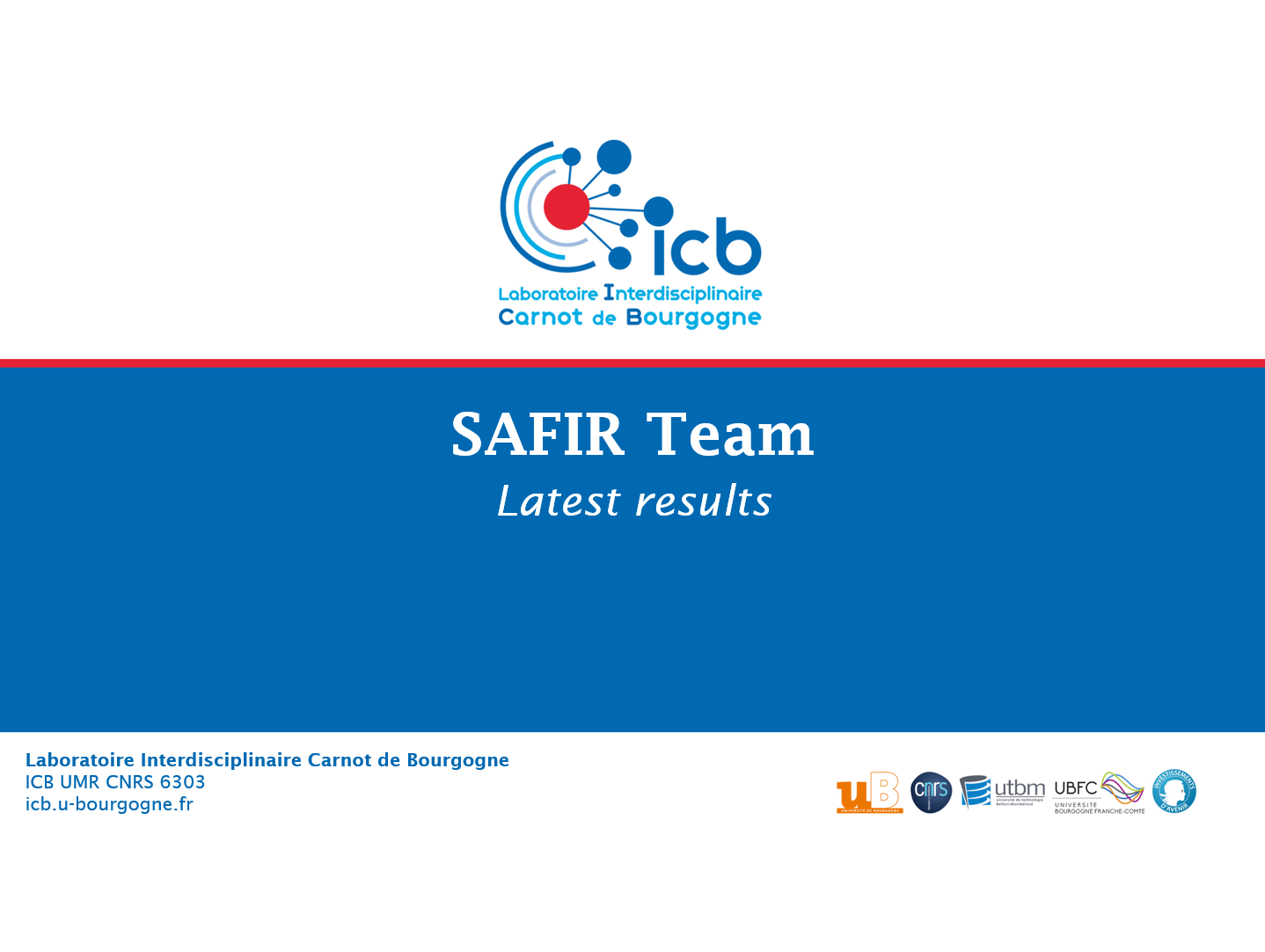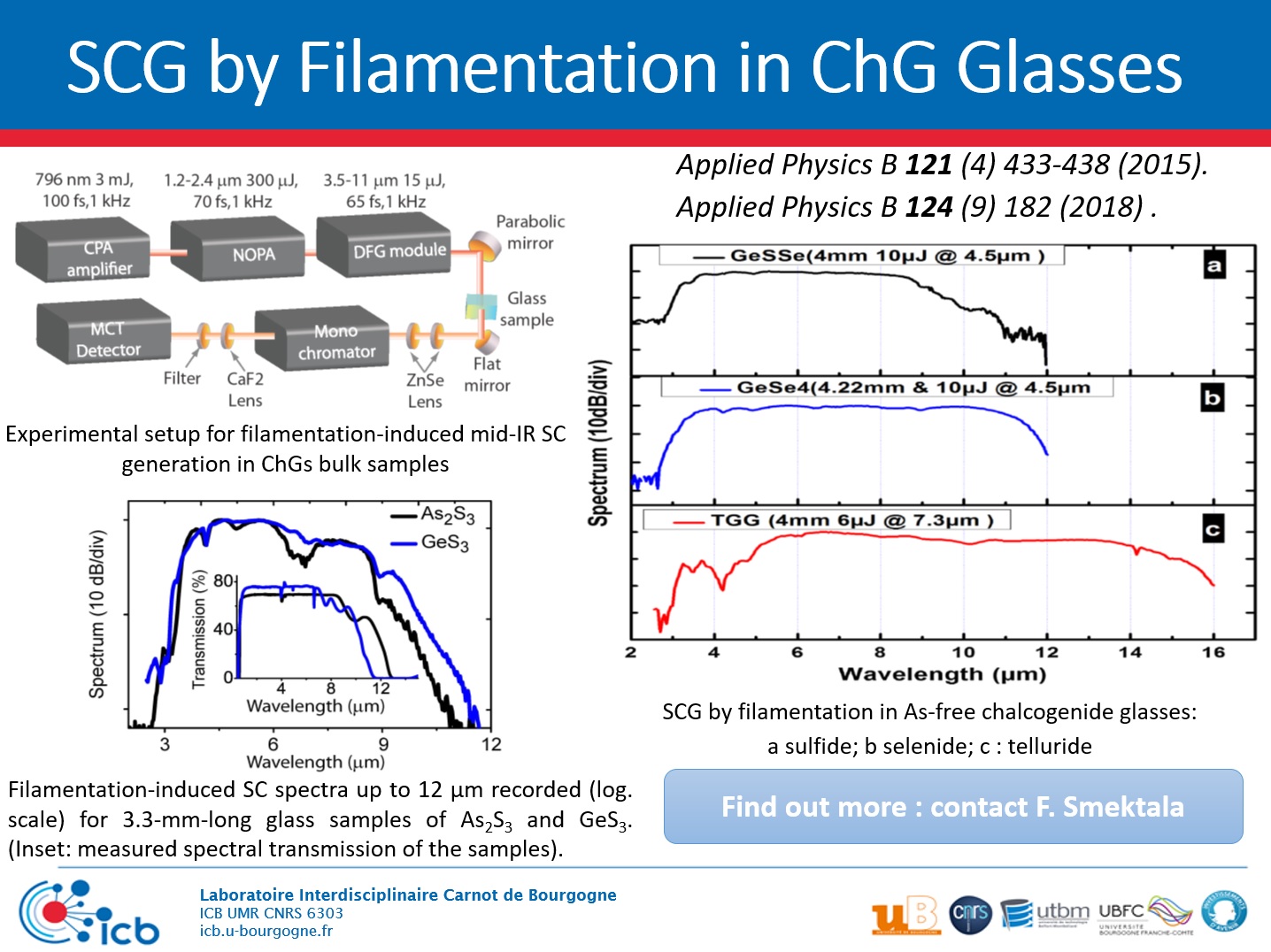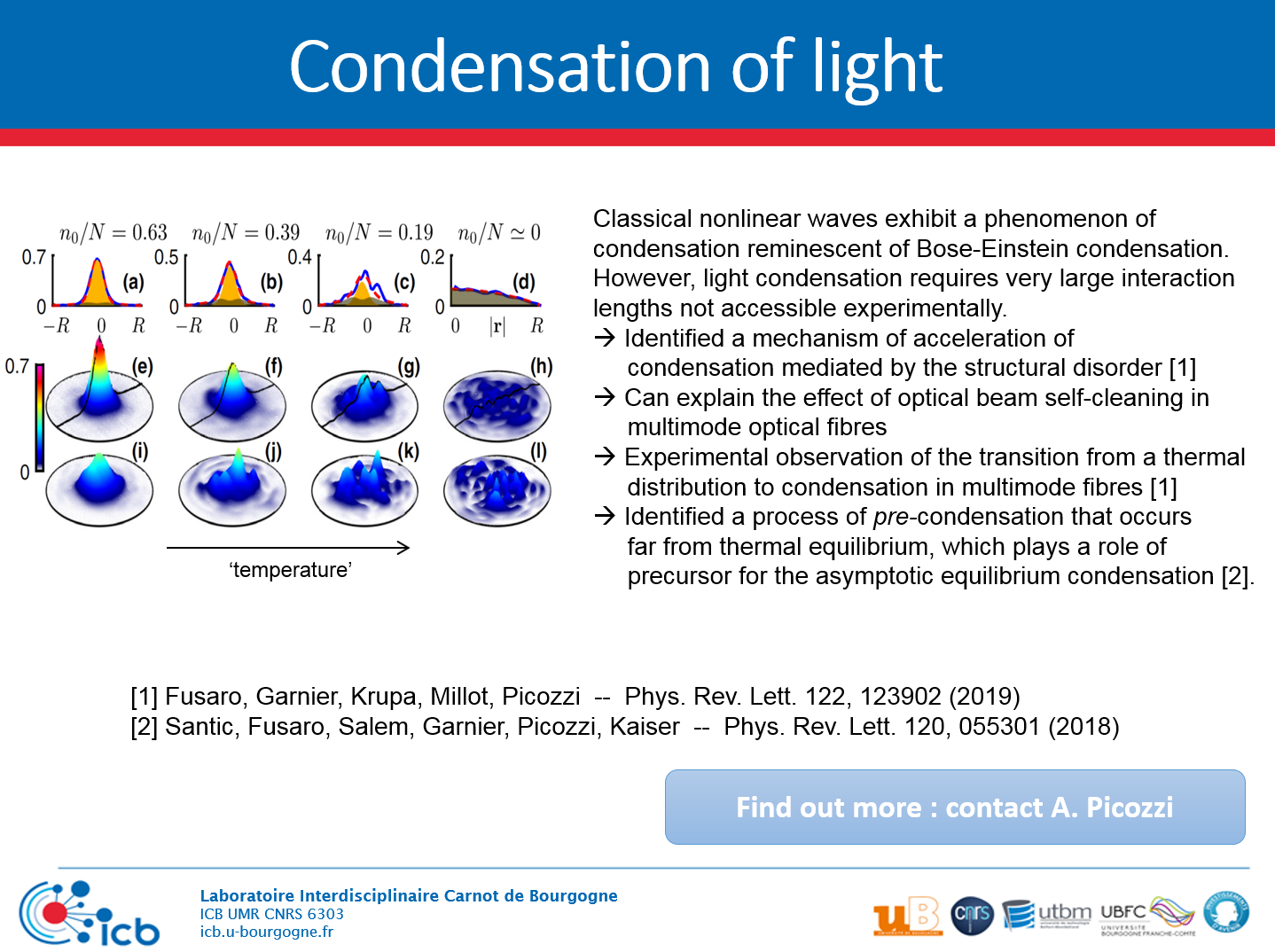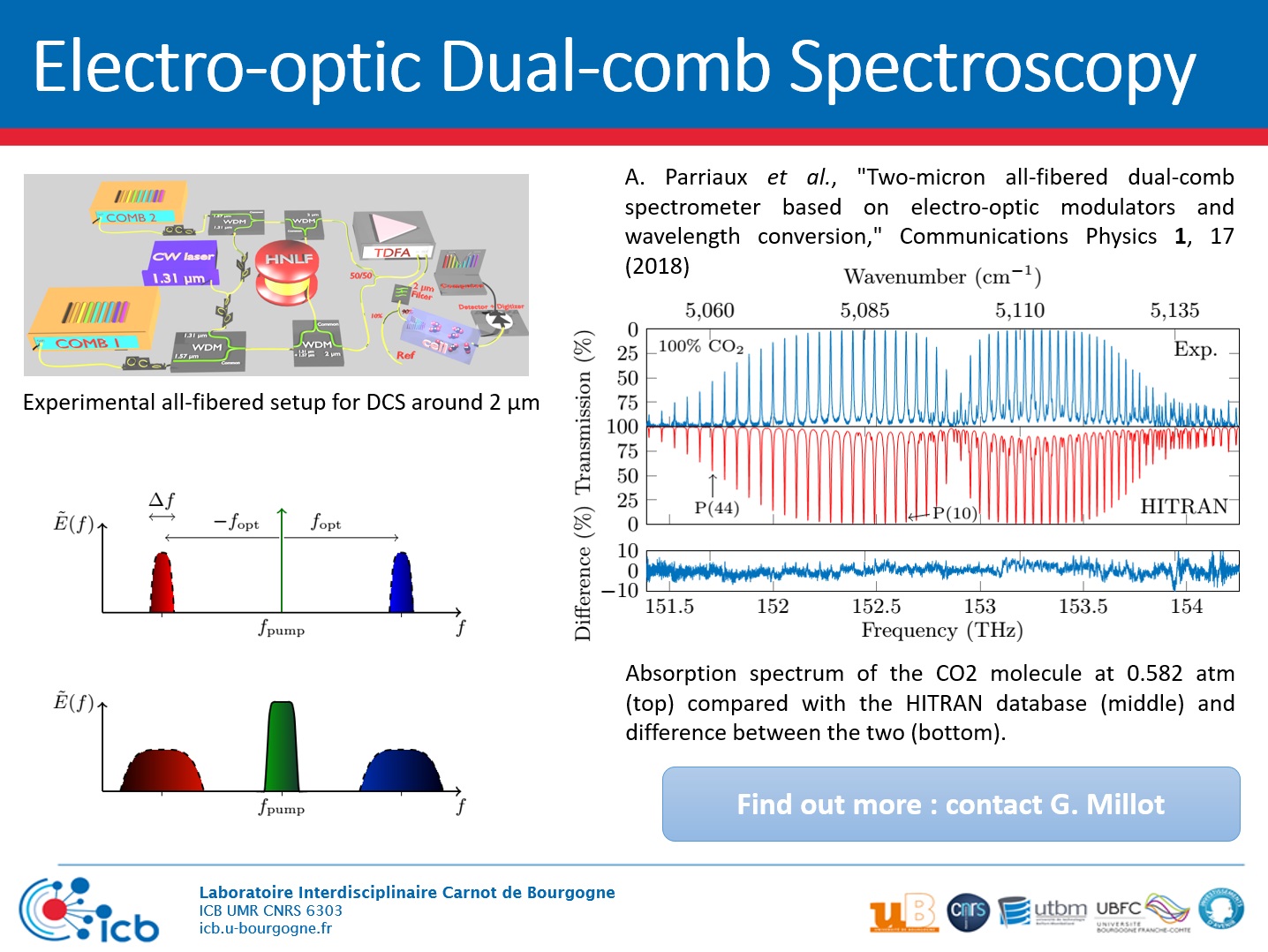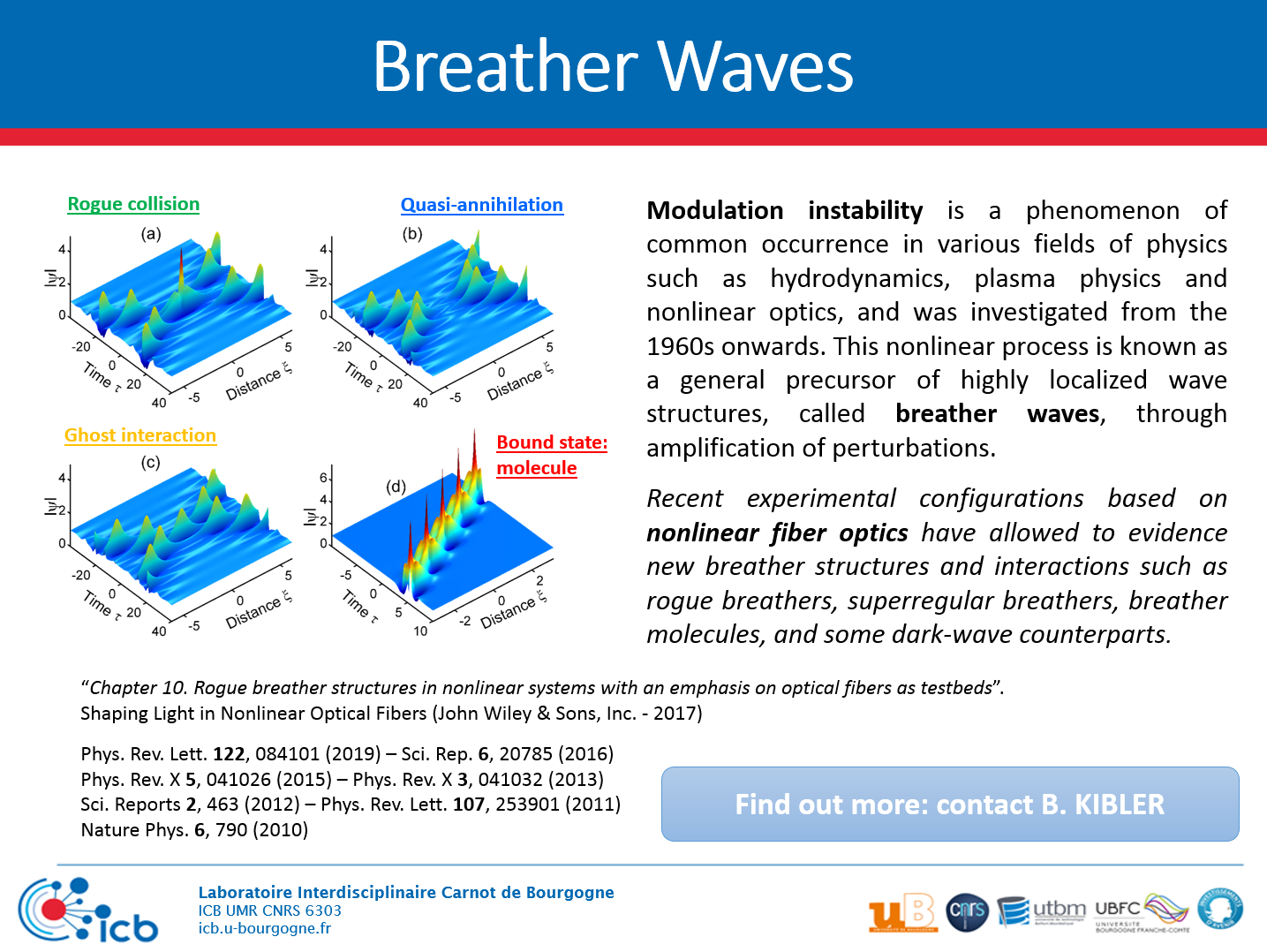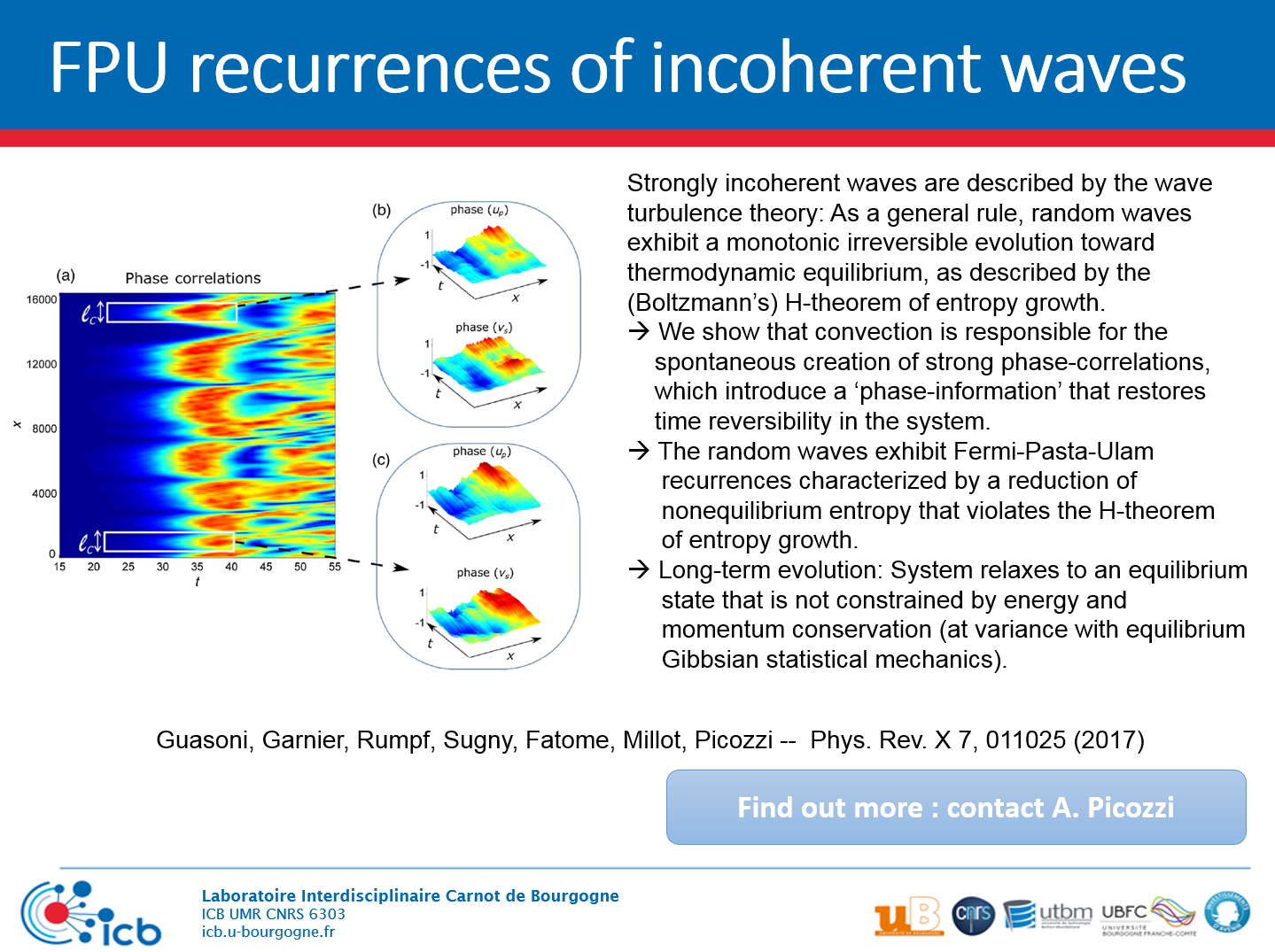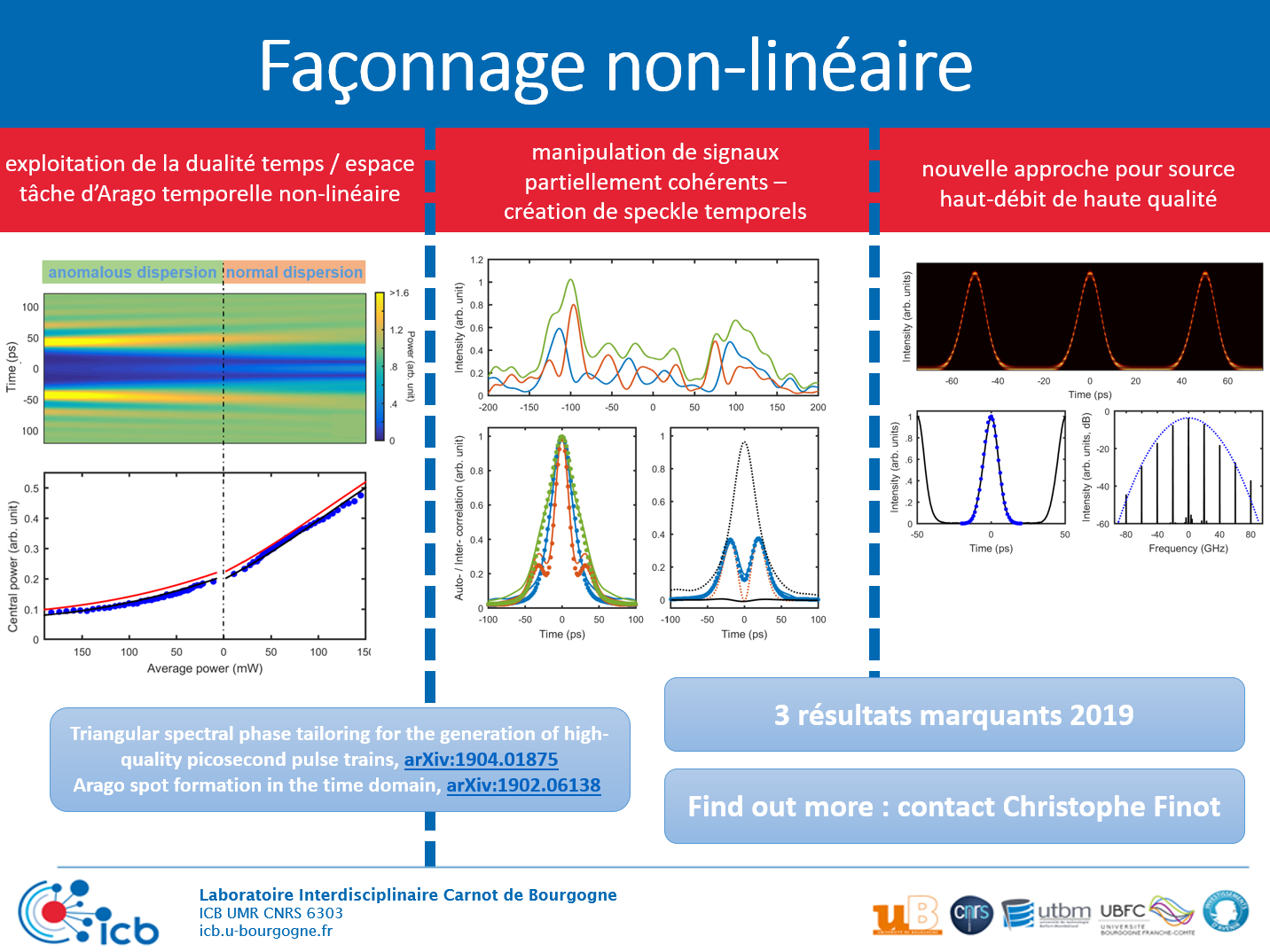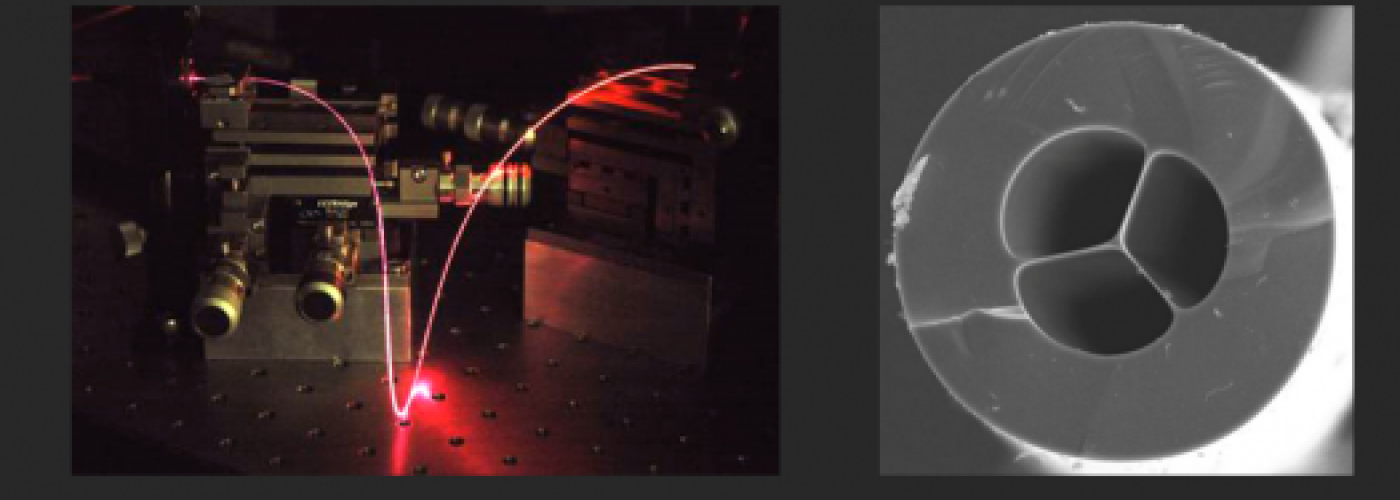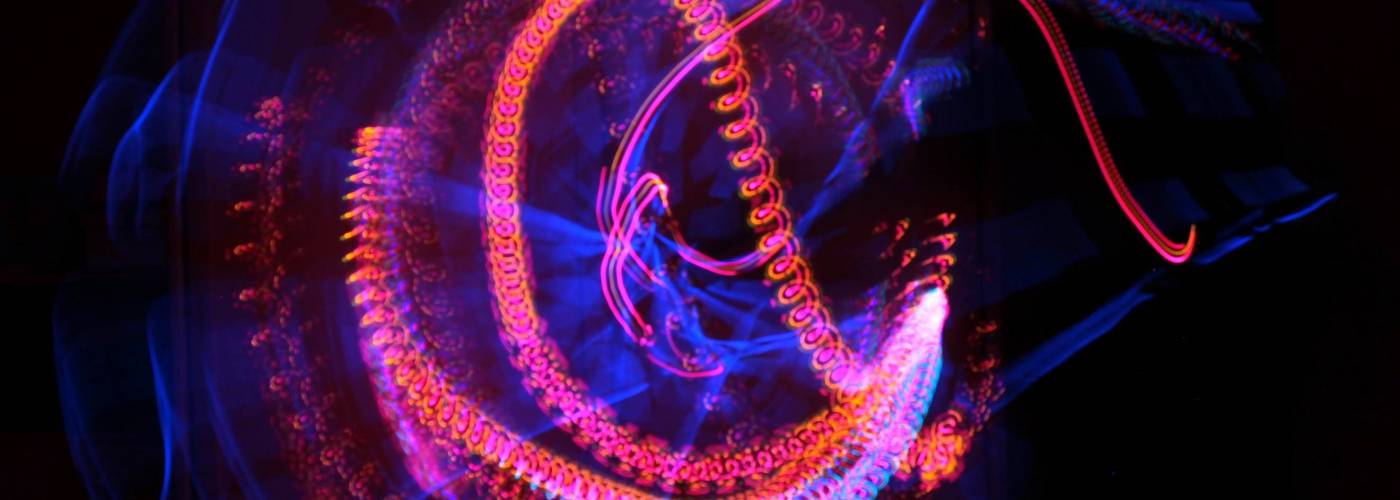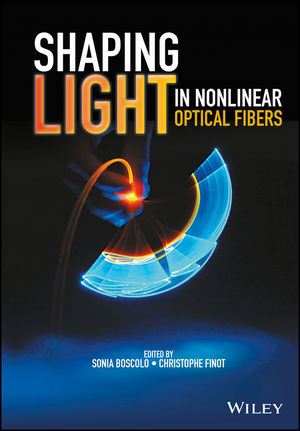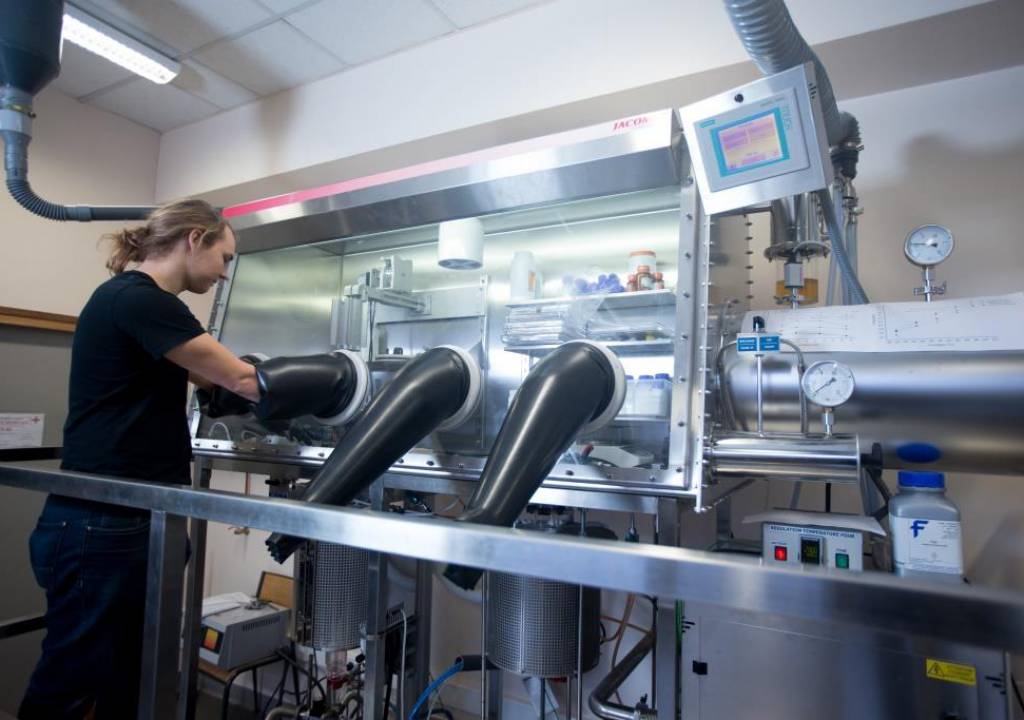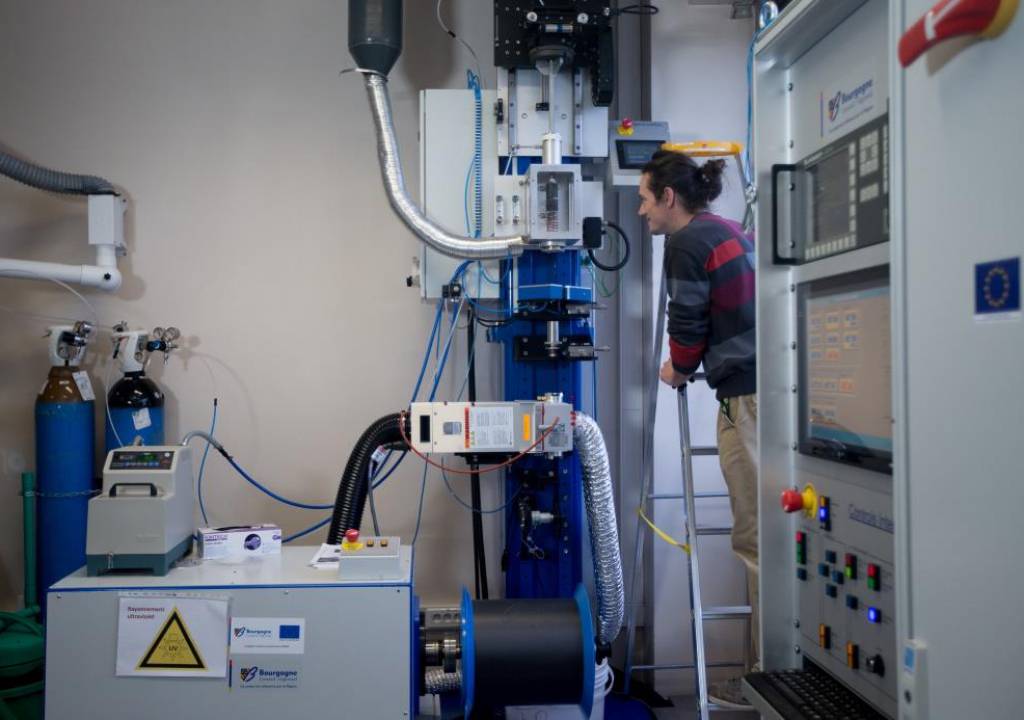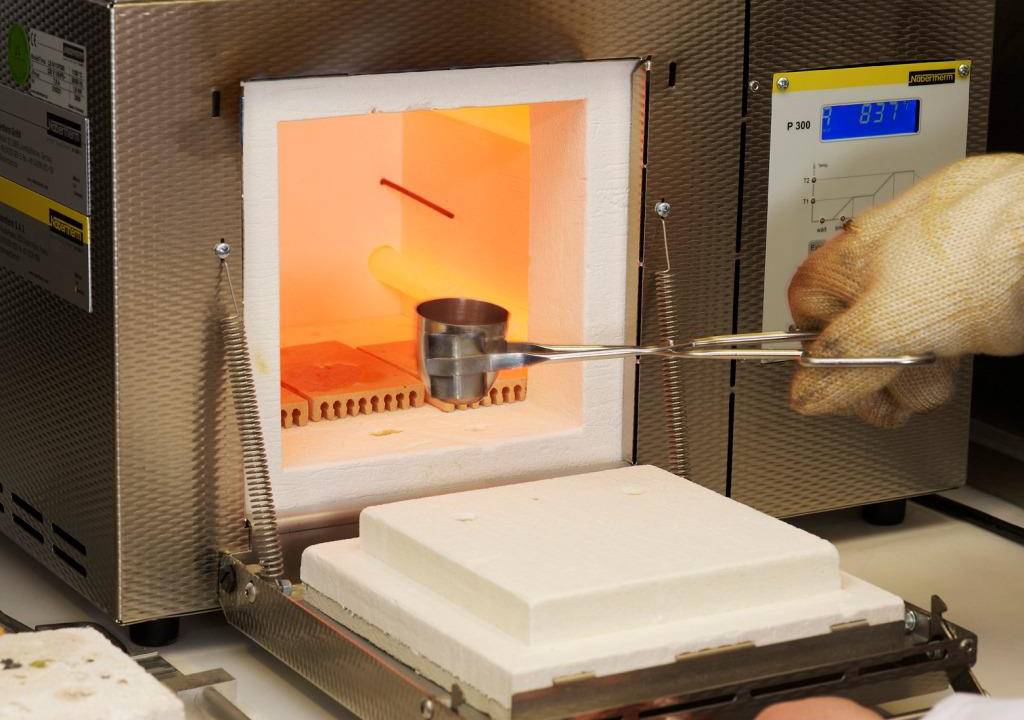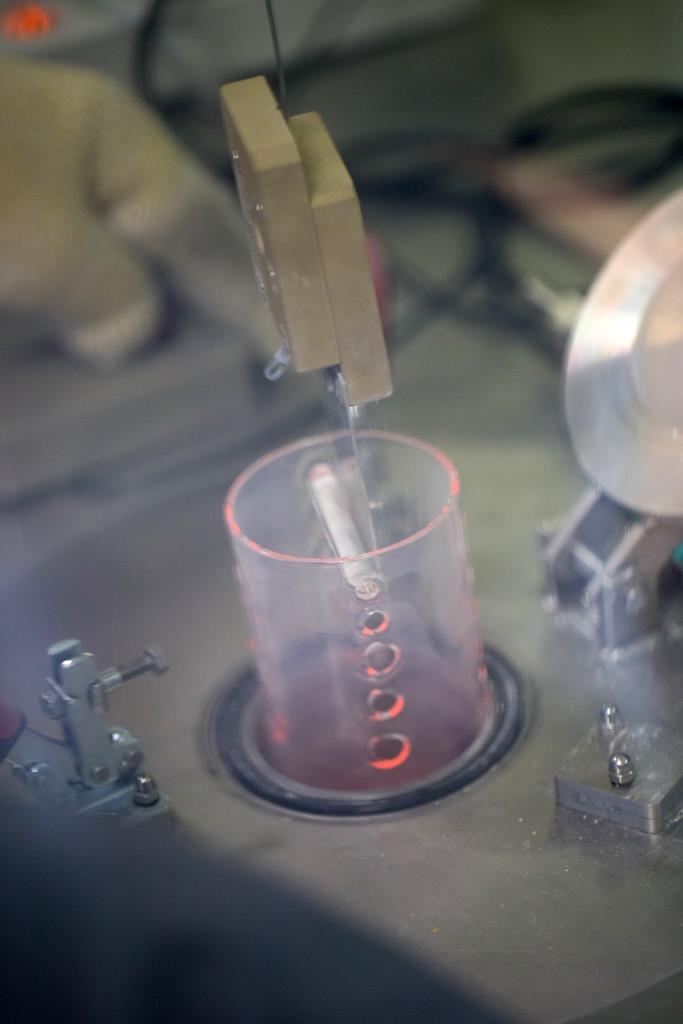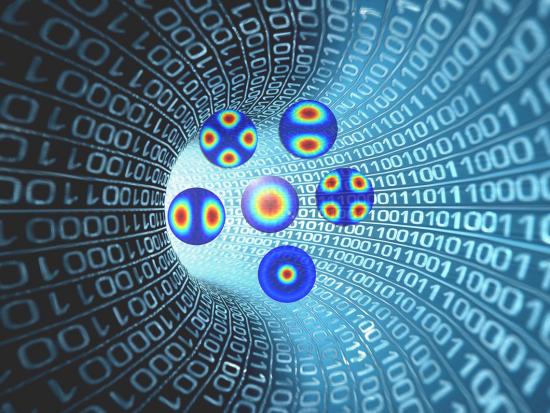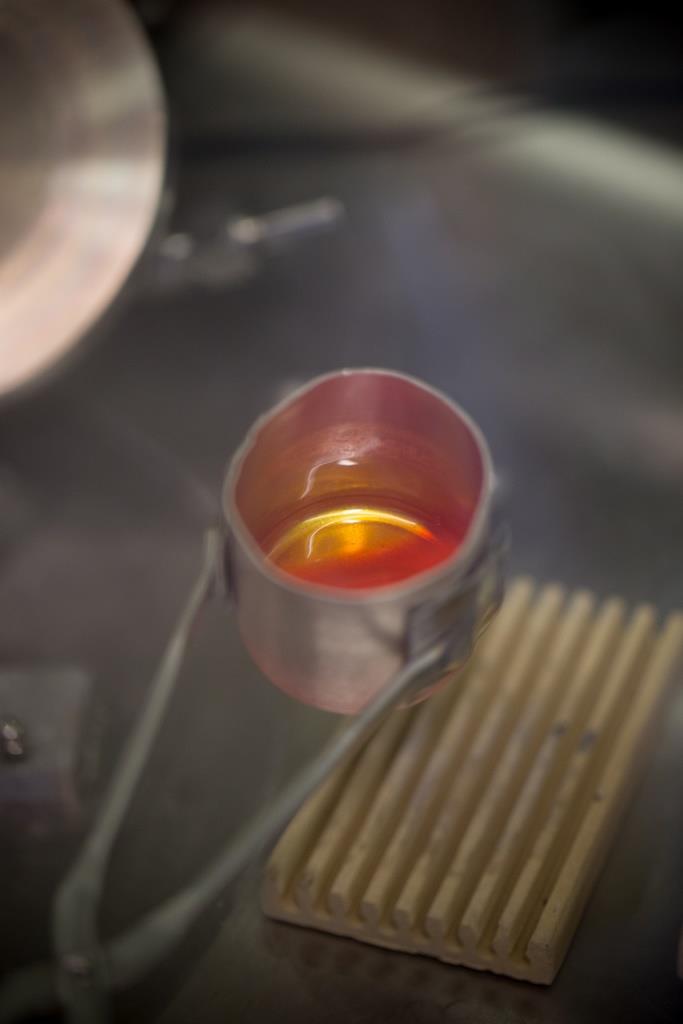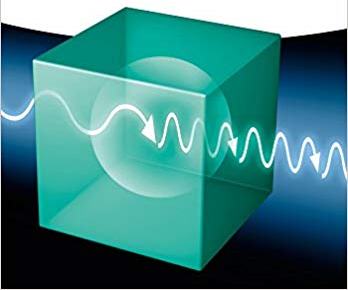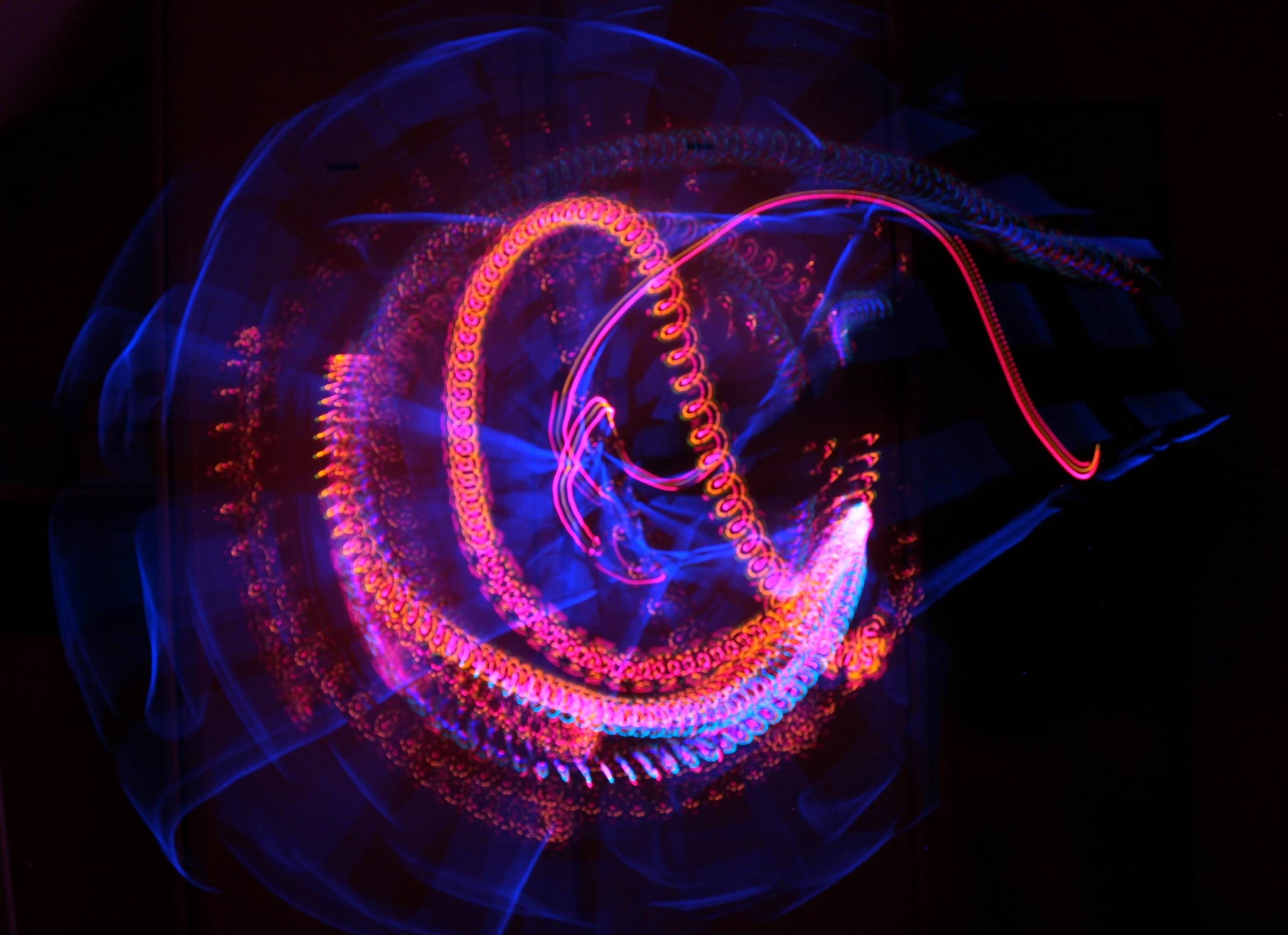SAFIR: Solitons, lAsers, Fibers and InfraRed photonics
The SAFIR team, attached to the Photonics department, is based on a very strong coupling between non-linear system theoreticians and experimental researchers in non-linear optics. It aims to develop new advanced optical functions that take advantage of the properties of light in different environments. The objective is to bring together our most recent advances in non-linear optics, ultra-fast optics, optoelectronics, optomechanics and innovative photonic materials in order to develop original approaches to optical signal processing that are disruptive with respect to the state of the art. This team is managed by Bertrand Kibler et Frédéric Smektala.
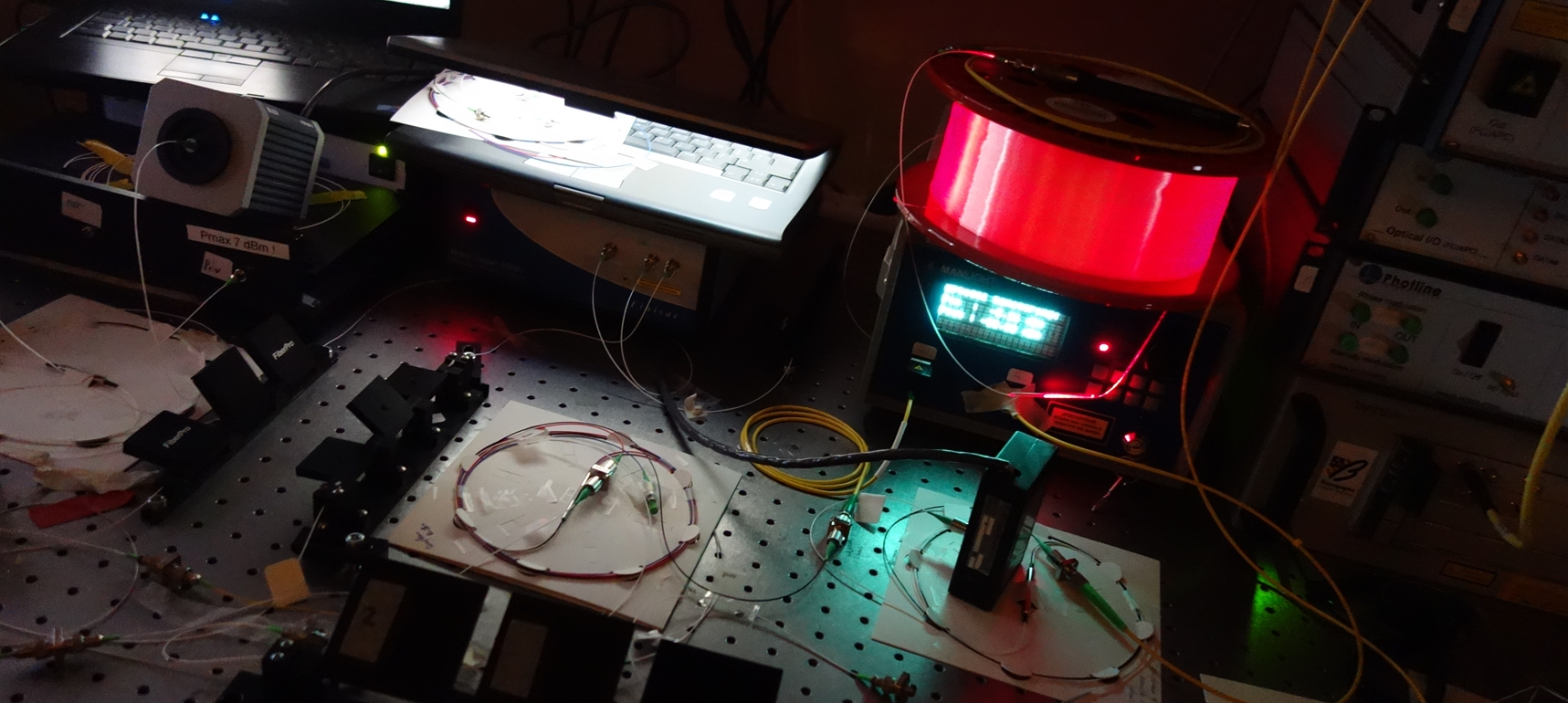
The main fields of investigation are high-speed all-optical information processing, new laser sources, nonlinear optics with coherent or incoherent waves, strongly nonlinear optical fibers for the infrared. Such works are mainly based on fundamental studies dedicated to original nonlinear phenomena in the field of optical fibers and waveguides. A part of our activities also answers the needs expressed by manufacturers, some of whom are involved in contracts (Bertin Technologies, CEA Valduc, URGO, TEB, Resolution Spectra Systems, etc.). Our ambition is to assert our position as a center of excellence at the national and international level in the field of nonlinear optics in optical fibers and to strengthen our industrial relations in the field of laser applications.
Research Activities
Our projects aim at (i) developing fiber-based high-repetition-rate pulse sources, novel all-optical functions for signal processing (e.g., self-organization of light and polarization control), and the generation of wideband IR light (supercontinuum) sources, (ii) studying fundamental nonlinear wave structures and their collective interactions such as solitons, breathers, and dissipative solitons, as well as the study of extreme events (rogue waves) in optics and their links with hydrodynamics.
Our activity on laser instrumentation focuses on the development of specific unconventional sources for industrial prototypes of strategic importance. The experience gained in the field of portable LIBS (Laser Induced Plasma Spectroscopy) analysis is extended to the field of geology.
Our research activities are also increasingly opening towards the mid-infrared (2-20 µm) because many molecules of application interest in chemistry, biology, medicine and the environment have a signature in this spectral domain. In particular, we are developing a new generation of optical fibers made of transparent chalcogenide and tellurite glasses in this spectral range. On the other hand, we develop and use optical frequency combs for applications intended for telecommunications and spectroscopy (health, environment).
Finally, the production of nano-optical devices integrated on a substrate connected to optical fibers and compatible with silicon technology is a major objective.
One of the team’s objectives is to balance fundamental and applied researches in the field of photonics and to promote know-how transfer in industry. While continuing to develop projects supported by national and European programs, the team also wishes to focus on projects carried out directly in partnership with companies or with high development potential.
Our facilities
Temporal Characterization
Spectral characterization
Spatial characterization
Signal generator
Splicers
- kc_data:
- a:8:{i:0;s:0:"";s:4:"mode";s:2:"kc";s:3:"css";s:0:"";s:9:"max_width";s:0:"";s:7:"classes";s:0:"";s:9:"thumbnail";s:0:"";s:9:"collapsed";s:0:"";s:9:"optimized";s:0:"";}
- kc_raw_content:
- [kc_row use_container="yes" _id="303284"][kc_column width="89.89%" _id="880037"][kc_column_text _id="917565"]
SAFIR: Solitons, lAsers, Fibers and InfraRed photonics
The SAFIR team, attached to the Photonics department, is based on a very strong coupling between non-linear system theoreticians and experimental researchers in non-linear optics. It aims to develop new advanced optical functions that take advantage of the properties of light in different environments. The objective is to bring together our most recent advances in non-linear optics, ultra-fast optics, optoelectronics, optomechanics and innovative photonic materials in order to develop original approaches to optical signal processing that are disruptive with respect to the state of the art. This team is managed by Bertrand Kibler et Frédéric Smektala.
[/kc_column_text][kc_spacing height="20" _id="527828"][/kc_column][kc_column width="10.09%" _id="971261"][/kc_column][/kc_row][kc_row use_container="yes" _id="917084"][kc_column width="59.62%" video_mute="no" _id="526878"][kc_column_text _id="56618"]Our Latest Results
[/kc_column_text][kc_spacing height="30px" _id="544444"][kc_carousel_images img_size="1500x400" items_number="3" tablet="1" mobile="1" speed="500" pagination="__empty__" auto_play="__empty__" alt_text="__empty__" _id="555939" onclick="lightbox" navigation="yes" progress_bar="yes" images="22854,14787,14073,14786,14154,14098,14785,14155,14162" nav_style="arrow" auto_height="yes"][kc_spacing height="20" _id="29530"][/kc_column][kc_column width="40.37%" video_mute="no" _id="870067"][kc_column_text _id="386377"]Head Group
Bertrand KIBLER
bertrand.kibler[at]u-bourgogne.fr
[/kc_column_text][kc_spacing height="30px" _id="702498"][kc_column_text _id="205004"]
Phone : +33 (0)3 80 39 59 32Frédéric SMEKTALA
frederic.smektala[at]u-bourgogne.fr
[/kc_column_text][/kc_column][/kc_row][kc_row use_container="yes" _id="704011" cols_gap="{`kc-css`:{}}" force="__empty__" css_custom="{`kc-css`:{}}" container_class="full bg-rs" animate="fadeInLeft||"][kc_column width="4%" _id="822659"][/kc_column][kc_column width="52%" _id="961265"][kc_single_image image_size="full" _id="644553" image_source="media_library" image="14160"][kc_spacing height="20" _id="8864"][kc_column_text _id="501262"]
Phone : +33 (0)3 80 39 60 29The main fields of investigation are high-speed all-optical information processing, new laser sources, nonlinear optics with coherent or incoherent waves, strongly nonlinear optical fibers for the infrared. Such works are mainly based on fundamental studies dedicated to original nonlinear phenomena in the field of optical fibers and waveguides. A part of our activities also answers the needs expressed by manufacturers, some of whom are involved in contracts (Bertin Technologies, CEA Valduc, URGO, TEB, Resolution Spectra Systems, etc.). Our ambition is to assert our position as a center of excellence at the national and international level in the field of nonlinear optics in optical fibers and to strengthen our industrial relations in the field of laser applications.
[/kc_column_text][kc_spacing height="20" _id="192018"][/kc_column][kc_column width="10%" _id="156226"][/kc_column][kc_column width="30%" _id="807488"][kc_spacing height="20" _id="947617"][kc_column_text _id="889594"]Team Members
[/kc_column_text][kc_spacing height="20" _id="755604"][kc_column_text _id="725253"]{slide=Teaching researcher}
- C.Finot, Prof.
- P.Grelu, Prof.
- G.Millot, Prof.
- O.Musset, Prof.
- F.Smektala, Prof.
- P.Tchofo-Dinda, Prof.
- C-H. Brachais, Assoc. Prof.
- A. Coillet, Assoc. Prof.
- K. Hammani, Assoc. Prof.
- J.-C. Jules, Assoc. Prof.
- P. Mathey, Assoc. Prof.
- S. Salaün, Assoc. Prof.
{/slide}
[/kc_column_text][kc_column_text _id="839179"]{slide=CNRS Researchers and Engineers }
- B.Kibler, Senior Res.
- A.Picozzi, Senior Res.
- P. Colman, Junior Res.
- E. Lucas, Junior Res.
- J.Fatome, Res. Engin.
- G.Gadret, Res. Engin.
{/slide}
[/kc_column_text][kc_column_text _id="652934"]{slide= UB Engineers and Technicians}
- F.Desevedavy, Res. Engin.
- C.Aquilina, Ass. Engin.
{/slide}
[/kc_column_text][kc_column_text _id="983846"]{slide=Non-permanent}
- M. Deroh, PostDoc
- A. Gelash, PostDoc
- C. Strutynski, PostDoc
- D. Bailleul, PhD student
- R. Bizot, PhD student
- M. Evrard, PhD student
- A. Jayantha, PhD student
- M. Leonardo, PhD student
- A. Malfondet, PhD student
- M. Mohamed, PhD student
- A. Petitjean, PhD student
- E. Serrano, PhD student
- A. Sheveleva, PhD student
- K. Stefanska, PhD student
{/slide}
[/kc_column_text][kc_column_text _id="638738"]{slide=Alumni}
- P. Morin, PhD / PostDoc
- M. Alsaleh, PhD
- G. Xu, PhD / PostDoc
- P-Y. Bony, PhD
- M. Guasoni, PostDoc
- E. Tchomgo Felenou, PhD
- C. Mback, PhD
- R. Sifodil, PhD
- F. Ambrani, PostDoc
- F. Feng, PhD
- U. Andral, PhD/PostDoc
- S. Kaya, PhD
- A. Bendahmane, PostDoc
- J-L. Blanchet, PostDoc
- A. Boucon, PostDoc
- C. Fortier, PhD
- B. Barviau, PhD
- C-H. Hage, PhD
- C. Michel, PostDoc
- Y. Yan, PostDoc
- M. Lamy, PhD
- F. Audo, PostDoc
- N. Berti, PostDoc
- A. Lemière, PhD
- B. Frisquet, PhD
- J. Picot-Clémente, PhD
- M. Nafa, PostDoc
- A. Parriaux, PhD/PostDoc
- M. Tang, PostDoct
- C. Vernoux, PostDoct
- K. Baudin, PhD
- J. Girardot, PhD
- A. Maldonado, PhD
{/slide}
[/kc_column_text][kc_spacing height="20" _id="731020"][/kc_column][kc_column width="4%" _id="726464"][/kc_column][/kc_row][kc_row use_container="yes" _id="250765"][kc_column width="12/12" video_mute="no" _id="5097"][kc_spacing height="30px" _id="417112"][kc_column_text _id="522564"]Research Activities
Our projects aim at (i) developing fiber-based high-repetition-rate pulse sources, novel all-optical functions for signal processing (e.g., self-organization of light and polarization control), and the generation of wideband IR light (supercontinuum) sources, (ii) studying fundamental nonlinear wave structures and their collective interactions such as solitons, breathers, and dissipative solitons, as well as the study of extreme events (rogue waves) in optics and their links with hydrodynamics.
Our activity on laser instrumentation focuses on the development of specific unconventional sources for industrial prototypes of strategic importance. The experience gained in the field of portable LIBS (Laser Induced Plasma Spectroscopy) analysis is extended to the field of geology.
Our research activities are also increasingly opening towards the mid-infrared (2-20 µm) because many molecules of application interest in chemistry, biology, medicine and the environment have a signature in this spectral domain. In particular, we are developing a new generation of optical fibers made of transparent chalcogenide and tellurite glasses in this spectral range. On the other hand, we develop and use optical frequency combs for applications intended for telecommunications and spectroscopy (health, environment).
Finally, the production of nano-optical devices integrated on a substrate connected to optical fibers and compatible with silicon technology is a major objective.
One of the team's objectives is to balance fundamental and applied researches in the field of photonics and to promote know-how transfer in industry. While continuing to develop projects supported by national and European programs, the team also wishes to focus on projects carried out directly in partnership with companies or with high development potential.
[/kc_column_text][/kc_column][/kc_row][kc_row use_container="yes" _id="558157"][kc_column width="12/12" video_mute="no" _id="381964"][kc_spacing height="30px" _id="162830"][/kc_column][/kc_row][kc_row use_container="yes" _id="759937" cols_gap="{`kc-css`:{`any`:{`group`:{`gap|.kc_column`:`10px`}}}}" force="__empty__" animate="fadeInRight||"][kc_column width="44.54%" _id="37768"][kc_single_image image_size="full" custom_link="#" icon="fa-plus" _id="955558" image="13987" image_source="media_library"][kc_column_text _id="334896"]{slide=Polarization Attraction (ERC Petal)}
Le projet ERC PETAL (Polarization condEnsation for Telecom AppLications) porté par Julien Fatome, propose une approche radicalement différente du contrôle de la polarisation de la lumière dans les fibres optiques. Il s’agit d’une rupture technologique vis-à-vis des systèmes actuels de contrôle de la polarisation basés essentiellement sur des systèmes opto-électroniques à boucle de rétro-contrôle. L’idée novatrice développée dans PETAL est d’explorer et d’exploiter une propriété originale de la lumière à auto-organiser son état de polarisation dans une fibre optique. Un des objectifs du programme PETAL sera également de généraliser cet effet à d’autres paramètres de la lumière, notamment dans le domaine spatial à l’aide de fibres optiques supportant plusieurs modes de propagation. L’enjeu sociétal du projet PETAL sera d’intégrer ce type de fonctions optiques dans les futurs réseaux de télécommunications de sorte à migrer progressivement vers des réseaux optiques de plus en plus transparents et intelligents.
Contact: Julien Fatome
{/slide}
[/kc_column_text][/kc_column][kc_column width="10.32%" _id="995304"][/kc_column][kc_column width="45.12%" _id="662128"][kc_single_image image_size="1400x500" _id="473299" image_source="media_library" image="13150"][kc_column_text _id="811692"]{slide=Rogue Waves}
Modulation instability is a phenomenon of common occurrence in various fields of physics such as hydrodynamics, plasma physics and nonlinear optics, and was investigated from the 1960s onwards. This nonlinear process is known as a general precursor of highly localized wave structures, called breather waves, through amplification of perturbations.
Recent experimental configurations based on nonlinear fiber optics have allowed to evidence new breather structures and interactions such as rogue breathers, superregular breathers, breather molecules, and some dark-wave counterparts.
Contact: Bertrand Kibler
{/slide}
[/kc_column_text][/kc_column][/kc_row][kc_row use_container="yes" _id="64060"][kc_column width="12/12" video_mute="no" _id="10514"][kc_spacing height="30px" _id="919634"][/kc_column][/kc_row][kc_row use_container="yes" _id="752515" cols_gap="{`kc-css`:{`any`:{`group`:{`gap|.kc_column`:`10px`}}}}" force="__empty__" animate="fadeInRight||" container_class="full bg-rs"][kc_column width="44.54%" _id="996062"][kc_single_image image_size="1400x500" _id="799656" image_source="media_library" image="14023"][kc_column_text _id="444919"]{slide=Non Linear Glasses and Special Optical Fibers}
The Non Linear Glasses and Special Optical Fibers Group @ ICB Lab in Dijon is among international leaders for studying nonlinear effects in special optical fibers based on nonlinear infrared glasses such as chalcogenide or tellurite fibers, for mid infrared supercontinuum generation for example.
The Non Linear Glasses and Special Optical Fibers Group owns a strong expertise in the fabrication of non-silica optical fibers and all the facilities to synthesis soft glasses and preforms as well as to draw fibers. The Group owns skills to manufacture high quality optical glasses combining infrared transparency and high non-linear optical properties. For example, tellurite glasses cast in the laboratory are transparent up to 6 μm and have non-linear refractive indices 30 times greater than that of silica. Chalcogenide glasses can be transparent up to 10 to 20 µm depending on their chemical composition with nonlinear indices 100 to 1000 times greater than that of silica glass. The group has mastery of the mechanical machining of these glasses to obtain preforms adapted to the drawing of microstructured optical fibers. A versatile drawing tower dedicated to the drawing of all types of low-melting glasses is available in the group to draw optical fibers with distinct refractive index profiles: step-index fibers with varying core diameter or microstructured fibers such as suspended core fibers for example. By this way, a fine control of the chromatic dispersion is achievable, and also of the nonlinear properties such as supercontinuum generation in the infrared. Recently, the Group has demonstrated a supercontinuum generation spanning from 2 to 14 µm in a GeSeTe step index fiber [A. Lemière et al., JOSA
B 36 (2) A183 (2019)].Contact: F.Smektala
{/slide}
[/kc_column_text][/kc_column][kc_column width="10.32%" _id="105744"][/kc_column][kc_column width="45.12%" _id="129232"][kc_single_image image_size="1400x500" _id="474797" image_source="media_library" image="12878"][kc_column_text _id="596826"]{slide=Solid-state lasers and industrial applications}
Contact: O.Musset
{/slide}
[/kc_column_text][/kc_column][/kc_row][kc_row use_container="yes" _id="157640"][kc_column width="12/12" video_mute="no" _id="421439"][kc_spacing height="30px" _id="683347"][/kc_column][/kc_row][kc_row use_container="yes" _id="48494" cols_gap="{`kc-css`:{`any`:{`group`:{`gap|.kc_column`:`10px`}}}}" force="__empty__" animate="fadeInRight||"][kc_column width="44.54%" _id="366607"][kc_single_image image_size="full" _id="617833" image_source="media_library" image="14013"][kc_column_text _id="248634"]{slide=Dual-Comb Spectroscopy}
Contact: G.Millot
{/slide}
[/kc_column_text][/kc_column][kc_column width="10.32%" _id="38546"][/kc_column][kc_column width="45.12%" _id="376839"][kc_single_image image_size="1400x500" _id="200941" image_source="media_library" image="14027"][kc_column_text _id="36063"]{slide=Fiber Lasers and dissipative solitons}
Contact: P.Grelu
{/slide}
[/kc_column_text][/kc_column][/kc_row][kc_row use_container="yes" _id="644031"][kc_column width="12/12" video_mute="no" _id="390127"][kc_spacing height="30px" _id="234082"][/kc_column][/kc_row][kc_row use_container="yes" _id="609188" cols_gap="{`kc-css`:{`any`:{`group`:{`gap|.kc_column`:`10px`}}}}" force="__empty__" animate="fadeInRight||" container_class="full bg-rs"][kc_column width="44.54%" _id="13297"][kc_single_image image_size="1400x500" _id="788706" image_source="media_library" image="14014"][kc_column_text _id="270965"]{slide=Thermalization et condensation}
Contact: A.Picozzi
{/slide}
[/kc_column_text][/kc_column][kc_column width="10.32%" _id="358258"][/kc_column][kc_column width="45.12%" _id="56753"][kc_single_image image_size="1400x500" _id="735240" image_source="media_library" image="14014"][kc_column_text _id="114959"]{slide=Nonlinear Shaping}
Dispersion and non-linearity are two effects widely considered to be harmful to the quality of an optical pulse. Nevertheless, when understood and controlled, these two effects open up a large range of possibilities. By exploiting these effects in optical fibres or waveguides, we are working to implement fundamental building blocks for ultra-fast information processing. Thus, we are working on the generation and the emporal or spectral manipulation of atypical optical profiles and on the optical functions of future networks. To achieve optimal performance, we can implement linear shaping steps, concepts from time-space duality or algorithms based on neural networks.
Find out more in:
Contact: C.Finot
{/slide}
[/kc_column_text][/kc_column][/kc_row][kc_row use_container="yes" _id="303554"][kc_column width="12/12" video_mute="no" _id="463015"][kc_spacing height="30px" _id="564338"][/kc_column][/kc_row][kc_row use_container="yes" _id="112701" cols_gap="{`kc-css`:{`any`:{`group`:{`gap|.kc_column`:`10px`}}}}" force="__empty__" animate="fadeInRight||"][kc_column width="44.54%" _id="461136"][kc_single_image image_size="1400x500" _id="400281" image_source="media_library" image="14022"][kc_column_text _id="199606"]{slide= Multimode Fibers}
Contact:
{/slide}
[/kc_column_text][/kc_column][kc_column width="10.32%" _id="30102"][/kc_column][kc_column width="45.12%" _id="933442"][kc_single_image image_size="1400x500" _id="69410" image_source="media_library" image="14159"][kc_column_text _id="415120"]{slide=Telecommunications at 2 µm}
Nowadays, the communication traffic is inexorably increasing and the growing fiber-to-the-home (FTTH) deployment as well as the demand of high definition video content will not stop this trend. Unfortunately, it seems that we are reaching soon a 'capacity crunch'. To prevent it, radical approaches have to be adopted. The two best candidates are the space division multiplexing and the emergence of a new spectral band. The favorite band is around 2 µm thanks to the large amplification band of Thulium. It is likely that the interest for the 2 µm wavelength band increases because it seems to be the perfect candidate for the convergence of fibers, photonics and plasmonics.
We are currently working on telecommunications at 2 µm. We explore the transmission of high bit-rate signal into subwavelength waveguides. Several material are considered as TiO2, SiGe, Si or SiN. First demonstrations have been recently published (see links). An (Open Access) interview is avalaible here.
Contact: K. Hammani
{/slide}
[/kc_column_text][/kc_column][/kc_row][kc_row use_container="yes" _id="517240"][kc_column width="12/12" video_mute="no" _id="832544"][kc_spacing height="30px" _id="178677"][/kc_column][/kc_row][kc_row use_container="yes" _id="651914" cols_gap="{`kc-css`:{}}" force="__empty__" container_class="full bg-rs"][kc_column width="50%" _id="877725"][kc_column_text _id="917686"]Our facilities
[/kc_column_text][kc_accordion _id="182482"][kc_accordion_tab title="Temporal Characterization" _id="740635"][/kc_accordion_tab][kc_accordion_tab title="Spectral characterization" _id="997661"][/kc_accordion_tab][kc_accordion_tab title="Spatial characterization" _id="934901"][/kc_accordion_tab][kc_accordion_tab title="Signal generator" _id="931475"][/kc_accordion_tab][kc_accordion_tab title="Optical Fiber fabrication" _id="848167"][kc_tabs speed="450" pagination="yes" active_section="1" _id="384567"][kc_tab title="Boîtes à gants" _id="231950"][kc_single_image image_size="1024x720" _id="90150" image_source="media_library" image="14065"][/kc_tab][kc_tab title="Tour de fibrage" _id="845331"][kc_single_image image_size="1024x720" _id="925169" image_source="media_library" image="14067"][/kc_tab][kc_tab title="étuve / fours" _id="768668"][kc_single_image image_size="1024x720" _id="621236" image_source="media_library" image="14080"][/kc_tab][/kc_tabs][/kc_accordion_tab][kc_accordion_tab title="Splicers" _id="327422"][/kc_accordion_tab][/kc_accordion][/kc_column][kc_column width="50%" _id="139507"][kc_carousel_images img_size="full" items_number="1" tablet="1" mobile="1" speed="500" pagination="yes" auto_play="yes" delay="8" alt_text="__empty__" _id="738384" onclick="lightbox" progress_bar="yes" images="14066,14021,14069,14022,14070,13987,14013,14027,14068,14023,14014" navigation="yes"][/kc_column][/kc_row][kc_row _id="790653"][kc_column width="12/12" video_mute="no" _id="624308"][kc_column_text _id="818351"]
[/kc_column_text][/kc_column][/kc_row]
